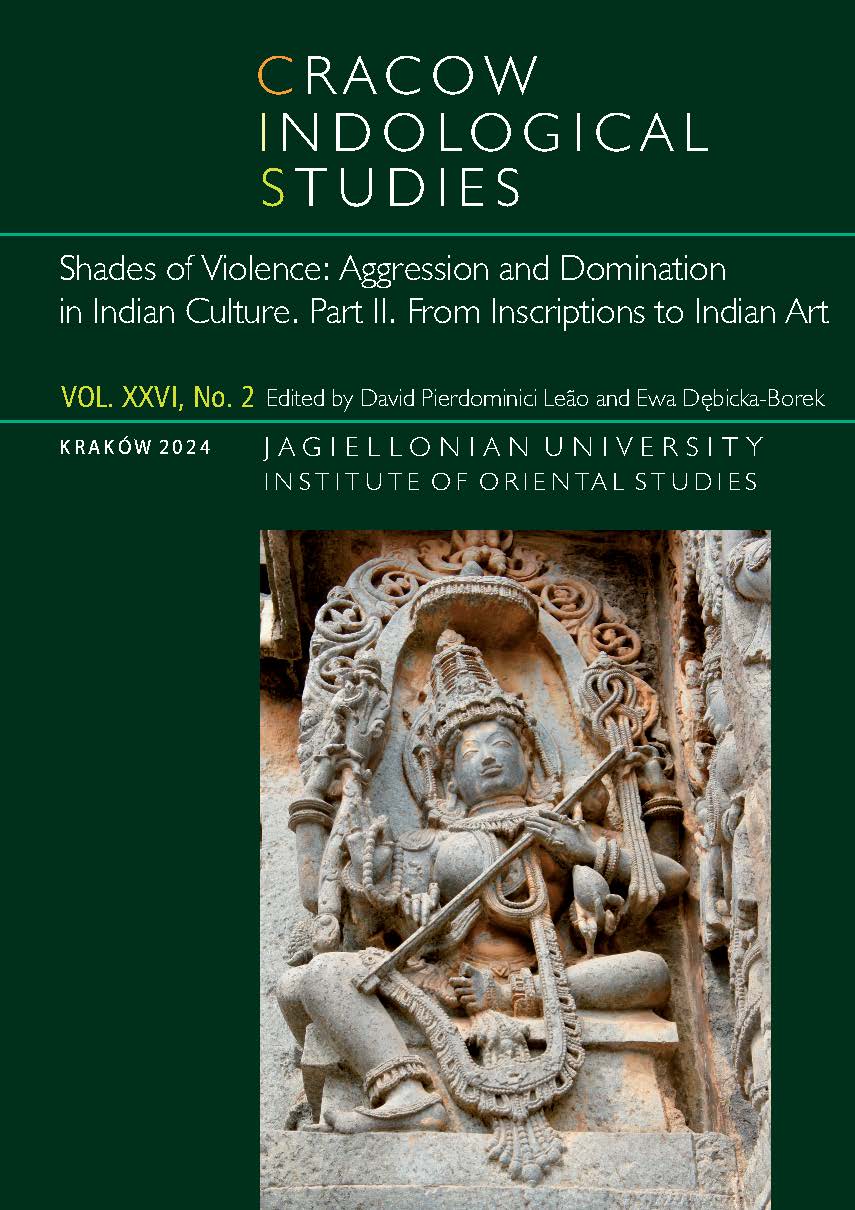Shattering the Crown of the God... Violence as a Formative and Legitimising Element
in the Pāṇḍya Dynastic Narrative
Shattering the Crown of the God... Violence as a Formative and Legitimising Element
in the Pāṇḍya Dynastic Narrative
Author(s): David Pierdominici LeãoSubject(s): Customs / Folklore, Cultural Anthropology / Ethnology
Published by: KSIĘGARNIA AKADEMICKA Sp. z o.o.
Keywords: Pāṇḍya dynasty; violence; Tamil literature; inscriptions; mahākāvya;
Summary/Abstract: Among the extensive repertoire of Pāṇḍya dynastic themes, the motif of clash between a Pāṇḍya sovereign and Indra is ubiquitous. This topos, which supposedly originated around middle of the 5th century CE, can be traced to Cilapattikāram XI, 17–30, which celebrates a Pāṇḍya monarch wearing Indra’s garland, capturing the clouds, and breaking the god’s crown. The nar- rative was later employed in the Tiruviḷaiyāṭaṟpurāṇam (late 13th century) and its Sanskrit rendering, the Hālāsyamāhātmya (14th–15th centuries), where the actions of the Pāṇḍya kings were inserted in the narratives about the divine līlās of Śiva in Madurai. Since the early phase of the dynasty, this mytheme was employed as a tool of political display in the South. After a survey of the motif in the first phase of the imperial documents, the paper will focus on the reemployment of the category of royal violence in the Teṅkāśi dynas- tic period (14th–18th centuries CE), using the lens of the official copper plates of the late Pāṇḍya chancery and the previous Sanskrit literary production.
Journal: Cracow Indological Studies
- Issue Year: 26/2024
- Issue No: 2
- Page Range: 119-151
- Page Count: 34
- Language: English

